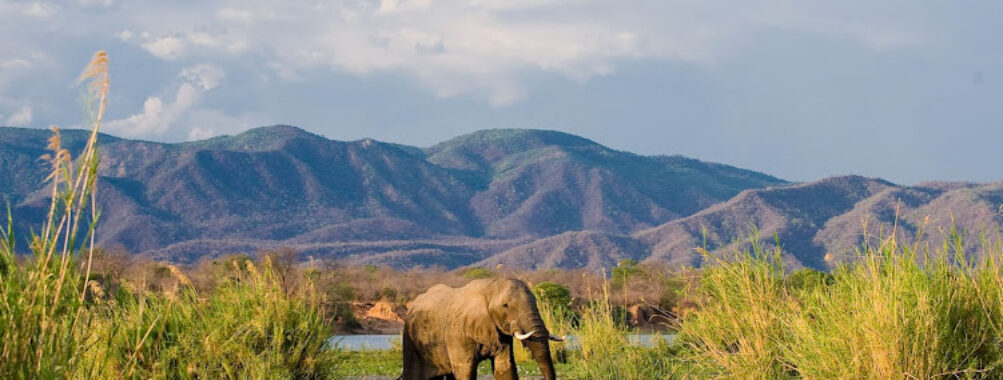
Lower Zambezi National Park
Table of Contents
Description
Lower Zambezi National Park is one of those rare places that still feels wild in the truest sense of the word. Spread across over 4,000 square kilometers along the northwestern bank of the mighty Zambezi River, it’s a place where the pace of life slows down and the rhythm of nature takes over. Visitors can expect to see elephants wading through the shallows, leopards slinking through the bush at dusk, and hippos grumbling in the water as if they own the place – which, in a way, they do. The park’s landscapes are as varied as its wildlife, ranging from lush riverine forests to open floodplains and the dramatic backdrop of the Muchinga Escarpment.
It’s not without its quirks – some areas can be a little rough around the edges, and the remoteness means you won’t find polished, city-like conveniences. But honestly, that’s part of its charm. The fact that it was once the private reserve of Zambia’s president meant it was off-limits to mass tourism for decades, so the wilderness here has been left largely untouched. You’ll find safari lodges that blend into the environment, picnic spots shaded by acacia trees, and even family-friendly areas with playgrounds and kid-friendly hikes. It’s a place that caters to both the seasoned safari-goer and the curious first-timer, without feeling overcrowded or over-commercialized.
If you’re the kind of traveler who likes a balance of adventure and comfort, this park delivers. There’s a certain magic in sipping your morning coffee while watching elephants cross the river, or hearing the distant roar of a lion as you fall asleep. And while not every moment is picture-perfect – nature can be unpredictable, and sometimes the weather or wildlife just doesn’t cooperate – the raw authenticity is what makes it unforgettable.
Key Features
- Over 60 species of mammals, including elephants, lions, leopards, and buffalo
- 378 recorded bird species, making it a birdwatcher’s paradise
- Zambezi River access for canoe safaris, fishing, and boat cruises
- Scenic Muchinga Escarpment backdrop
- Family-friendly amenities: playgrounds, picnic tables, and kid-friendly hikes
- Outdoor sports facilities including tennis and volleyball courts
- Wheelchair accessible entrance and public restrooms
- Dog park for visitors traveling with pets
- Free parking lot for self-drivers
Best Time to Visit
The dry season from June to October is widely considered the best time to visit. During these months, the vegetation thins out and wildlife congregates around the river, making sightings more frequent and photography easier. I’ve been here in late August, and the sheer number of elephants along the water was mind-blowing – it felt like they were everywhere. The days are warm, the nights cool, and the roads more accessible.
That said, the green season from November to April has its own charm. The park bursts into life with lush greenery, migratory birds arrive in flocks, and the air feels fresh and alive. But it’s also wetter, and some areas can become inaccessible due to flooding. If you don’t mind a bit of mud and fewer crowds, you might find it even more magical.
How to Get There
Getting to Lower Zambezi National Park requires a bit of planning, but the journey is part of the adventure. The most straightforward way is to fly into Lusaka, Zambia’s capital, and then take a small charter flight directly to one of the airstrips near the park. This cuts travel time significantly and gives you an aerial view of the Zambezi River winding through the landscape – a sight worth the extra cost.
For those with a taste for overland travel, you can drive from Lusaka in about 4–5 hours, depending on the route and road conditions. The last stretch can be bumpy, so a 4×4 vehicle is recommended. Some travelers opt for a combination: fly in to maximize time on safari, then drive out at a leisurely pace, stopping in local villages along the way.
If you’re coming from Zimbabwe, you can cross via the Chirundu border post and enter the park from the south. Just make sure to have your paperwork sorted – border formalities here can be slow, and patience is key.
Tips for Visiting
First off, pack light but smart. Neutral-colored clothing works best for blending in during game drives, and layers are your friend – mornings can be chilly, afternoons hot. Don’t forget a good pair of binoculars; you’ll kick yourself if you spot a rare bird and can’t get a closer look.
Bring cash in small denominations. While some lodges take cards, remote areas often rely on cash for tips or small purchases. And speaking of tips – your guides and camp staff work incredibly hard, often going above and beyond to ensure your experience is memorable. A little appreciation goes a long way.
If you’re traveling with kids, take advantage of the playgrounds and kid-friendly hikes. The park is surprisingly accommodating for families, but keep in mind that wildlife is unpredictable – always follow your guide’s instructions. For pet owners, the dog park is a rare bonus in a safari setting, but remember, pets aren’t allowed on game drives for obvious reasons.
Lastly, slow down. This isn’t the kind of destination you rush through. Spend an afternoon just watching the river, or take a canoe trip and let the current carry you past pods of hippos and basking crocodiles. The magic of Lower Zambezi lies as much in the quiet moments as in the big wildlife sightings.
Location
Places to Stay Near Lower Zambezi National Park
Find and Book a Tour
Explore More Travel Guides
No reviews found! Be the first to review!